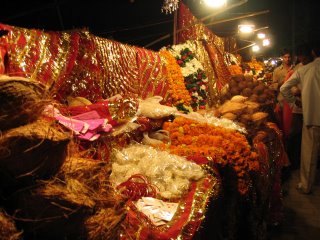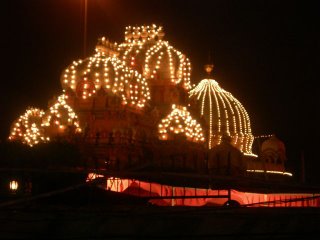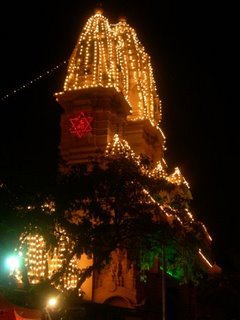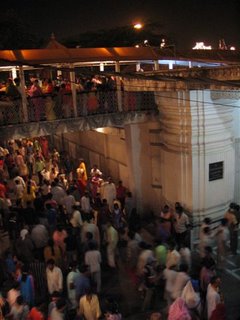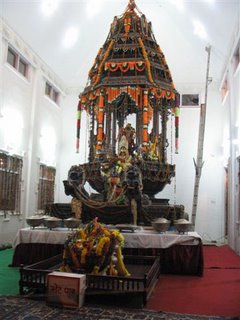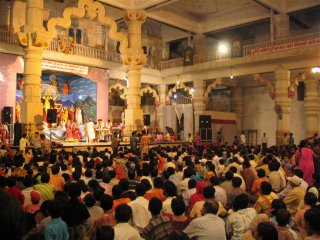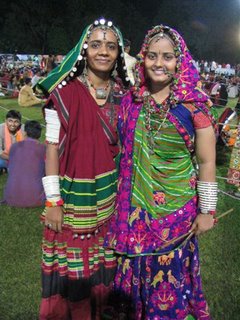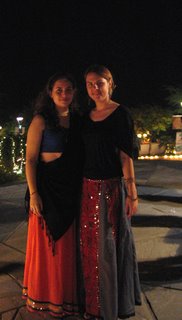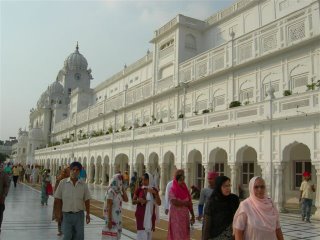Hot shower and realization that at least one full day can be devoted to this charming from the first sight town charged us with immense thirst for exploration. It was still early morning when we left our guesthouse and ventured to the town. The fog was not getting any thicker and we were little bit shivering from cold. A long descending street took us along the houses densely covering the hills and as if built on each other.

Having rested from the rush of yesterday and fresh after a quite night the streets started filling in with pupils of all ages: smallest ones accompanied by their parents and older ones walking in couples, triples and small groups.
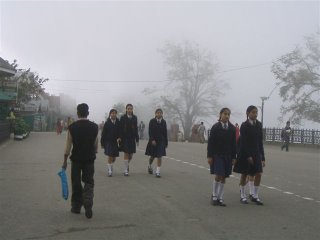
Another category of people rushing somewhere through the fog were smartly dressed bureaucrats and bank clerks: a number of important state government agencies and financial institutions not at least provide jobs in the area. Otherwise, small and big groups of men were not heading anywhere and but carrying out their duty on the Mall – hanging out, gossiping and stuff.
The continuously condensing fog, the school girls in the uniforms not even closely reminding traditional salwar-kameez, smartly dressed men rushing to work through the grey morning, old European architecture around

- all clearly pointed that the former summer capital of British was proudly cherishing the British heritage and had carefully integrated its features in its everyday life.
Tuned in for a nice breakfast, we found an amazing café where stuffed paranthas, samosas and tea are cooked right in front of you and the mouth-watering sweets and namkeen are faced on large trays to appeal to your aesthetics and appetite. The men working there were extremely (not too, mind you) sweet to us and I totally fell in love with the place.
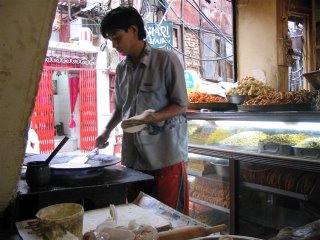
Here we found quite a few men in warm sleeveless jackets, suits and with briefcases indulging a cup of tea and a morning newspaper before heading to work. Among those we spotted a (British - ? ;o)) couple ceremoniously breakfasting with their paranthas, dahi and tea – with all the necessary plates, saucers, spoons, forks and knifes being involved in this almost religious-in-its-significance rite.

Later we walked down to the tiny railways station to get tickets for Himmalaya Queen that would take us through the narrow gauge down to Kalka and then back to Delhi tomorrow.

Here, from the station we could see the town still wrapped in the fog.
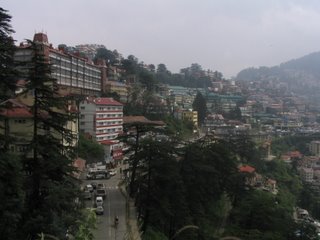
Yet, once the tickets were figured out we headed up and took a walk to the Observatory Hill that hosts the Indian Institute of Advanced Science these days. The sky cleared

and we could enjoy the sun rays filtering in the wet green crowns of the trees shading our path.
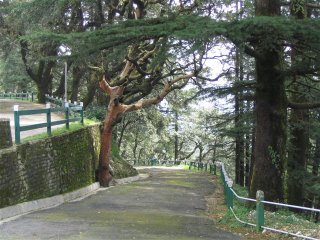
The Institute is located in a beautiful castle and hosts guest researchers pursuing advanced degrees in social science. The grand interiors with sophisticated wood carvings, spacious hall with that looks and feels like a dome, chandeliers brought from Belgium, ballroom that serves as a library now, wide wooded staircase leading to the study rooms framing the upper floor - all lure you to come over for a guest research project one day ;o)

Once back to the Mall we had a chance to have a proper look around the town that the fog was hiding before. Shimla appeared to me like a twin brother of
Trondheim (city in the Northern Norway) and Ulyanovsk (my home town in Russia). The latter I visited a year ago – also at one cold and just starting off autumn morning – and got in love about the very town built on the hills, its old buildings, winding streets meant for walking or cycling rather than for cars, the atmosphere of the busy, but not rushy morning when people make it to work or University, my morning invigorative coffee and muffin from Narvessen, and Trondheim men who impressed me with the classy manners – wearing black trench coat and black polished leather shoes and cycling. As for the similarities with my hometown – in Shimla I found almost exact copies of some historical buildings in our downtown (Dom Goncharova, Dom Ofitserov).



Yet, Shimla remains nothing but eclectic with its old British building, Hindu temples, narrow lanes, street-staircases a-la Stockholm and busy markets.

Wandering around further and popping in the small lanes gave us a vivid picture of the local life. I derive particular thrill from figuring out and observing how various things are actually made. We found a small lane hosting tailors’ shops where you can watch them at work.

I eventually found a place where sweets are cooked and saw people pouring out curded milk in ridiculously huge bowls and putting them on fire.

The discoveries continued at the local market

Where we smelled all sorts of spices.

stood frozen in front of the stall with home-made pickles

were tempted to get vegetables just for the sake of it
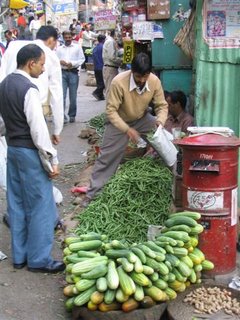

I found it particularly cool that it was very hard to find packaged dahi (yogurt) in Shimla – they normally sell this sour curd loose. For all these little discoveries I loved Shimla that brings you to the origins in a way. People there do not live in the world of the ready made consumption, having no idea of what food items are made of and what it takes to stitch a shirt. And their life does not hide inside the house, but rebelliously flows out through the open doors, windows and hearts.
To a tender whisper of the night that gradually enveloped the hill station

we were sipping freshly made coffee at the Indian coffee house. Not even being British we found our piece of nostalgia in Shimla. The coffee house was run in the best traditions of a Soviet restaurant somewhere in Yalta (sea resort) – with a menu board made of golden letters showing the stability of the range and ridiculously low prices, walls painted with an oil paint, scarce lighting, solid tables with worn-out and a bit scratched covers, massive chairs of artificial leather, dishes that had being used for ages with no single item replaced however damaged unless clearly broken and waiters dressed in a white-strangely-military informs. We both cried out of tender emotions
